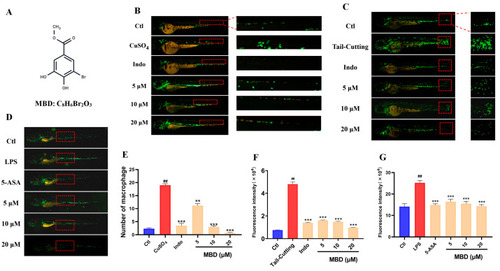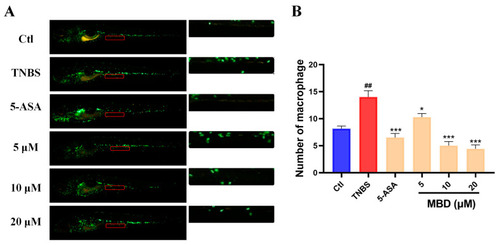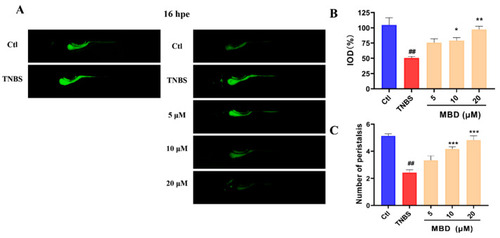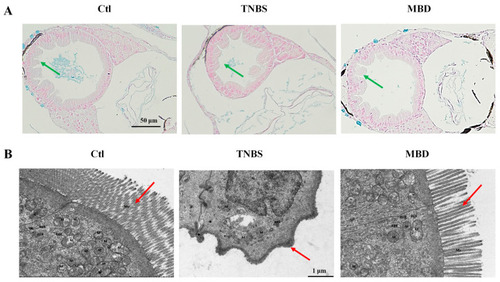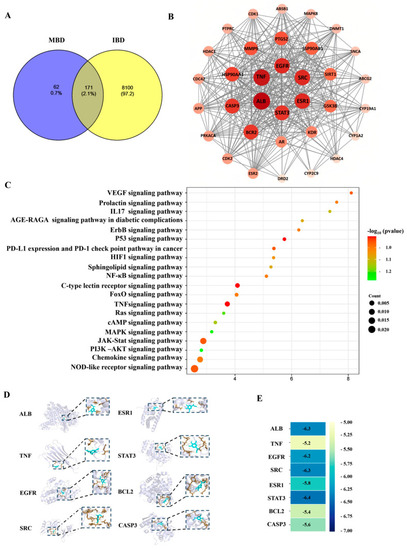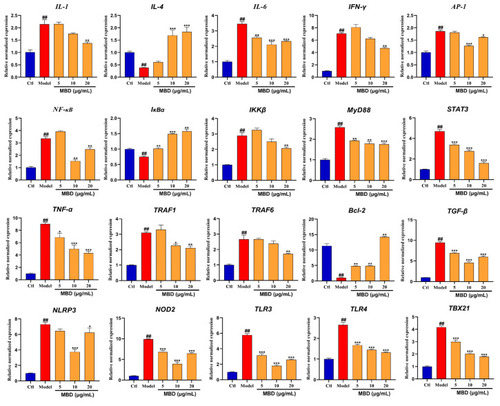- Title
-
Methyl 3-Bromo-4,5-dihydroxybenzoate Attenuates Inflammatory Bowel Disease by Regulating TLR/NF-κB Pathways
- Authors
- Huang, J., Li, L., Xu, L., Feng, L., Wang, Y., Sik, A.G., Jin, M., Wang, R., Liu, K., Li, X.
- Source
- Full text @ Mar. Drugs
|
The anti-inflammatory effect of MBD against CuSO4, LPS or tail-cutting. ( |
|
The anti-inflammatory effect of MBD in the zebrafish IBD model induced by TNBS. ( |
|
The protective effect of MBD on intestinal peristalsis and efflux activity. The zebrafish was stained with calcein solution for 16 h. ( |
|
MBD enhanced the integrity of the intestinal structure. Images representative of HE staining ( |
|
The inhibition of ROS elevation induced by TNBS. ( |
|
Network pharmacology analysis. ( |
|
Transcriptome analysis. ( |
|
mRNA expression of genes involved in inflammation after MBD exposure. Gene mRNA expression is shown as the relative expression by fold compared to the Ctl. ## |

